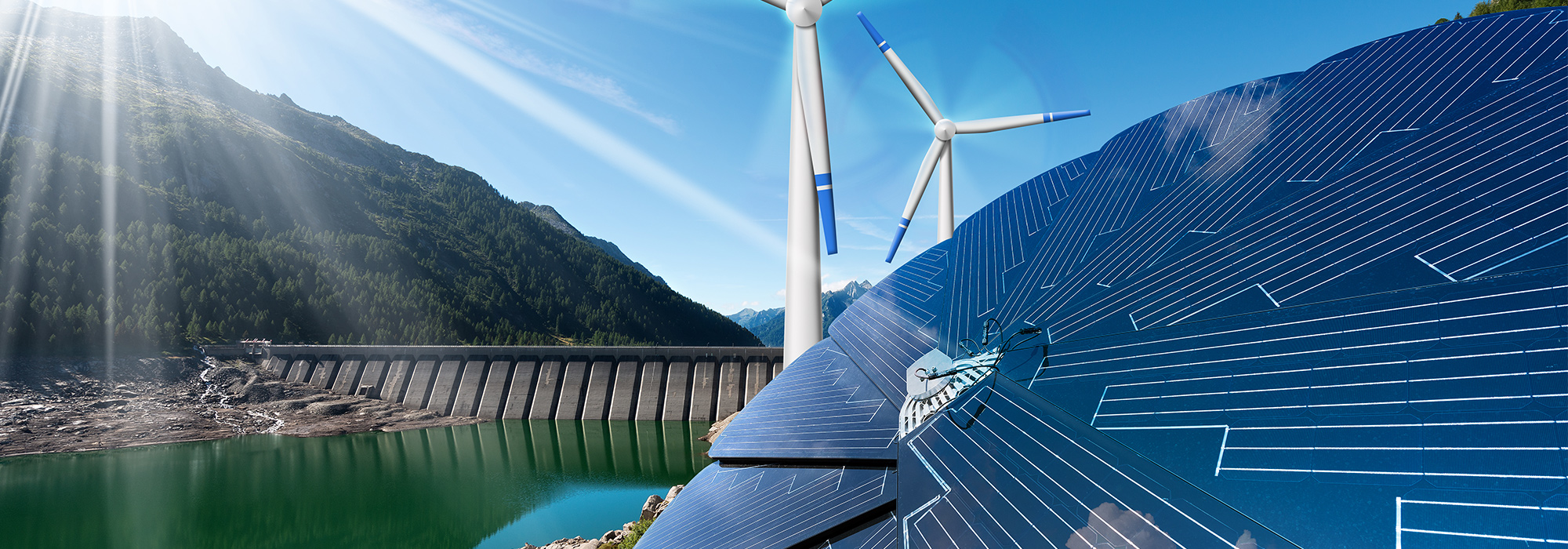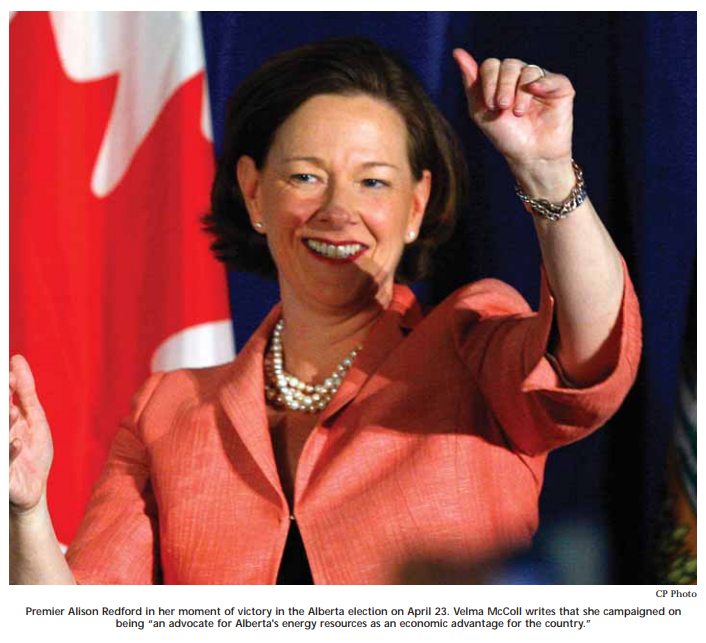
Energy both unites and divides us as a country. We are blessed with significant energy riches: conventional fossil fuels, hydro, uranium, wind, tidal energy, and coal, for example. An elaborate network of pipelines, transmission lines and distribution lines moves energy to our homes and businesses every day. We tend to take these seamless systems for granted and ignore that our aging energy infrastructure was designed for the needs and technology of the last generation.
For the past several decades, energy and environment issues have caused deep rifts in our national debate. The divide between Alberta and Ottawa that began in the 1970s and deepened over the National Energy Program in the 1980s became shorthand for everything that the East did not understand about the West, an article of faith that became part of the argument for a firewall. On the other side of the country, there is another deep wedge. The terms of the original 1968 Churchill Falls deal continue to shape the energy relationship between Quebec and Newfoundland, affecting the electricity markets in Ontario, Atlantic Canada and the eastern United States today. Much of the planning for the new 3,000 megawatt project for Lower Churchill Falls assumes that this 40-year-old dispute cannot be resolved and designs an elaborate new transmission system that avoids running lines through Quebec. This dispute may continue to fester until the original deal expires in 2041.
On the environment front, we view our connection with our parks and wilderness as helping to unify our national character. However, we become more divided into urban and rural views on species-at-risk legislation, clean air, and chemical and pesticide regulations. The biggest environmental burr in the saddle of the federation has been the Kyoto Protocol, creating a debate about the transfer of wealth between regions that has lasted nearly two decades. We recently abandoned the Kyoto commitment, but the split in perspectives on climate change persists today along regional lines and has created a dysfunctional patchwork of regulations and policies.
These environmental divisions also find their roots in the 1970s and 1980s, when the modern environmental movement began to take shape with expanded environmental laws on air, water and species at risk; the Green Plan of the Mulroney years; important global conferences in Stockholm and Rio; and the first Earth Day. In those days, energy and environment issues were seen as distinct agendas, discussed by separate players. Today, we increasingly understand our future will build environmental efficiencies into the heart of energy production and consumption systems.
When Peter Lougheed became premier of Alberta, Canada was responding to a period of turmoil and change in the global energy system. The Organization of Petroleum Exporting Countries (OPEC) was flexing its muscle, and nations learned that global pricing volatility and oil imports had left their economies vulnerable. The energy crisis in the 1970s was also the first time we saw a sharp increase in energy conservation, yielding a brief 2 percent drop in demand. Many jurisdictions responded to the price shocks by mapping out strategies for energy self-sufficiency — although progress has been slow ever since and we still struggle with these questions today.
Most people forget that in the 1970s our federal government refused to grant permission to extend an oil pipeline from Alberta to eastern Canada because it was cheaper for Ontario to buy imported offshore oil. From there, Premier Lougheed spent 10 years railing against central Canada’s rejection of western energy. The famous “let the eastern bastards freeze in the dark” was the final straw in reaction to a nationalistic pricing policy under the National Energy Program, which cost Alberta financially and flaunted provincial jurisdiction. It has taken us decades to recover, and trust between East and West on energy issues is still in short supply. However, domestic and global energy circumstances have changed dramatically, and we are being forced to consider a different conversation.
The biggest environmental burr in the saddle of the federation has been the Kyoto Protocol, creating a debate about the transfer of wealth between regions that has lasted nearly two decades. We recently abandoned the Kyoto
commitment but the split in perspectives on climate change persists today along regional lines and has created a dysfunctional patchwork of regulations and policies.
If we are to realize Prime Minister Stephen Harper’s vision of Canada as a global energy superpower, we need to better understand what the term means inside our federation. Surely a superpower takes stock of its own internal assets, understands its own supply chains, knows what export markets are seeking, and pursues efficiencies within its own production and consumption systems. The current assessment of Canada’s energy strengths lies in our raw resources — hydro, oil, natural gas, uranium — but much less has been done to determine the opportunities for value-added upgrading or processing. We also lag in modernizing our electricity system, in renewable energies, in realizing gains from energy conservation, and in deploying a wide array of emerging and resource-efficient technologies where Canada has growing advantages.
Canada has been a net exporter of most energy forms since 1969. Virtually all of Canada’s exports of oil, natural gas and electricity and 85 percent of our uranium exports go to the United States. The US is our largest customer, and accounts for 91 percent of our energy exports in raw energy as well as energy-intensive goods and services. Even with the lower prices for Canadian energy in our landlocked market, gross energy exports were $94 billion or 23 percent of all exports in 2011, by far the largest segment of Canada’s international trade, according to the National Energy Board.
To continue to capitalize on these strengths, we need increased collaboration between jurisdictions. With pipeline proposals from Keystone XL, Gateway and Kinder Morgan, as well as the proposed LNG terminals on the two coasts and the need for interprovincial transmission ties, it is time to find a way for provinces to open up transportation routes and gain support from local communities.
For many reasons, Atlantic Canada is thinking more collaboratively about power across the region. Rather than each province developing balkanized electricity systems, the proposed hydro project at Lower Churchill is sparking an unprecedented level of collaboration between the provincial power producers to consider regionally efficient cost models and systems on future generation, transmission and distribution. Shale gas is also changing the economics and supply pictures in natural gas markets. For example, shale plays in the eastern United States are making it attractive to ship gas north into Canada, potentially reducing demand for western shale gas.
The idea of federal-provincial cooperation on energy is not new. As recently as 2007, the Council of the Federation released a report entitled A Shared Vision for Energy in Canada. It wisely pointed out that “we are one of the few countries in the world that is not only energy-rich, but also fully capable of increasing its energy production in an environmentally and economically sustainable manner. These resources, combined with the intellectual and technological skills possessed by Canadians, have made Canada’s domestic and export energy sector one of its biggest economic drivers.”
The report went on to lay out a seven-point plan to support energy conservation, expand the development and deployment of energy technologies, increase our capacities in green energy sources, modernize our electricity systems, improve regulatory approvals, build capacity to meet labour needs, and bring provinces more fully into international energy negotiations. These principles remain relevant today and could be the basis for the next Council of the Federation energy discussion when the council meets in Halifax this summer.
This kind of an approach is consistent with the Constitution, under which the power to set energy policy is divided between the provincial and federal governments. The provinces own the natural resources and handle most regulation and energy sector development. The federal government harmonizes energy policy nationally, promoting regional economic development, offshore development, interprovincial facilities, plus international and interprovincial trade. Both levels of government invest in energy research.
We must find a way to build principles that respect the energy mixes in each province and accept that regional cooperation may bring benefits. While we have avoided these complex conversations until now, we must begin to define what Alison Redford calls the “Canadian energy economy.” However, we are going to have to realize that the natural resource and energy riches in the West need not come at the expense of Ontario. We should challenge Premier Dalton McGuinty’s recent claim that high energy prices have kept the loonie strong and hurt Ontario, since it pits one province against another and perpetuates old models.
Perhaps it is time for a more mature Canadian union — one that understands, preserves and protects regional strengths, while acknowledging that there is a mutually beneficial national interest. A Confederation that recognizes that we can collaborate in energy technology, R&D and conservation, while respecting jurisdiction and unique provincial interests. It is wise that the federal government is not leading the current conversation, creating more room for debate and discovery. Provincial and territorial leaders also understand acutely that modernized energy systems underpin economic growth in all sectors.
At the same time, we cannot ignore the political dynamics that affect our energy calculations. For the last several decades, the national interest has been defined primarily as what would win seats in Ontario and Quebec. The perception — and often the reality — has been that Ottawa was centrally controlled by and for these two provinces, with little room for other regions to influence outcomes. There were always well-argued cases that this was best for Canada, although it bred strong resentment in both the Atlantic and the West. This narrow definition of the federation could not work indefinitely, even if it has guided our policies for decades.
The 2011 election shifted the balance of power, giving us a majority government primarily with seats from the West and Ontario. The Conservatives won 147 seats west of the Ottawa River. And in the revised 338-seat House in 2015, there will be 27 new seats from Ontario, Alberta and British Columbia. This amounts to a geographic and political realignment. But it brings an uneasy alliance on energy and may take some time to rebalance. However, with a prime minister from Calgary, we risk repeating a dysfunctional pattern if our answer is an immediate pendulum swing to the West. If Canada’s political and economic imperatives are now defined primarily by what’s best for Alberta or the western provinces, we have not grown up as a federation, rather we have changed politically dominant geographies.
We cannot ignore the political dynamics that affect our energy calculations. For the last several decades, the national interest has been defined primarily as what would win seats in Ontario and Quebec. The perception — and often the reality — has been that Ottawa was centrally controlled by and for these two provinces, with little room for other regions to influence outcomes.
It is worth noting that some influential voices are again suggesting that it may be time to expand the amount of western energy being shipped to eastern Canada. Former New Brunswick Premier Frank McKenna, Wildrose Party leader Danielle Smith and former Conservative cabinet minister Jim Prentice, now vicechair of CIBC, have all floated ideas about how to form a more perfect domestic energy union with more pipelines and transmission systems. Though their ideas differ, each one is calling for us to rethink the domestic energy equation. Peter Lougheed has suggested that it may be time for Alberta to re-establish a position of leadership within Confederation and constructively lead the conversation.
Premier Redford campaigned on being an advocate for Alberta’s energy resources as an economic advantage for the country. She has committed to investing $3 billion in funding over 20 years for an energy research group called AOSTRA 2, after the Alberta Oilsands Technology and Research Authority, created by Premier Lougheed in 1974. This will allow for next-generation efficiencies in production and resource use throughout the extraction process. If the oil sands are going to remain economically and environmentally competitive over the next several years, these improvements are essential from two perspectives — cost per barrel and social licence to operate.
There are other signs of new approaches. The collaborative Canadian Oil Sands Innovation Alliance brings collective intellectual property and leadership to improving environmental performance in four areas — water, air, tailings and greenhouse gases. The Toronto-based innovation centre, MaRS, has created an innovation fund to invest in renewable and cutting-edge technologies. Canada is also beginning to map out territory for clean technology in export markets. There is a strong role for these resource-efficient technologies to support our trade agreements with Brazil, India and China, and as part of the broader TransPacific Partnership.
Premier Redford has stated her commitment to build a cross-country consensus for an energy economy that benefits Canada, not just Alberta. As she said on election night, she wants to build bridges not walls, and she will need to make her case to some skeptical colleagues, particularly in BC, Quebec and Ontario. Her vision is to create a flexible framework in which provinces can work collaboratively with industry, innovators, academics, think tanks and nongovernmental organizations — and ultimately the federal government — to speed the transformation of our energy systems. For the first time in many years, there is broadly aligned support from stakeholders across the country.
Though many business leaders want a national approach, there are a few who say that the market alone is the strategy, while others suggest that any progress will involve heavy-handed federal interference. It’s time for a full debate, so that we can choose a different path, one that upholds the market, respects the Constitution and jurisdiction and yet transcends provincial boundaries, finding regional and other opportunities in this complex but critical area of public policy.
Our energy future can be so much greater and more diverse than where we’ve been in the last four decades. But it will require us to leave historic grievances behind and build new bridges within the country; address energy and environment issues in a bold, integrated way; and become globally competitive in a new energy economy that looks ahead to 2030 and beyond. As Premier Redford has said, “It’s time for us to dream that big.”
Photo: Shutterstock








